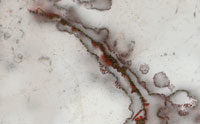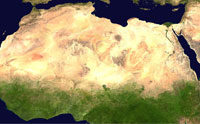Rapid erosion means a recently-formed gorge in Taiwan could disappear within 50 years. …read more Read more here: creation.com
Atheists are convinced life came into being by naturalistic processes, but do their conclusions match the evidence? …read more Read more here: creation.com
By Dr. Andrew A. Snelling Let’s take a closer look at the radioactive dating method and the radiometric dating methods and see how reliable they really are. …read more Read more here: AIG Daily
Testing the waters to see if this idea explains how massive coal beds were formed. …read more Read more here: creation.com
By Dr. Andrew A. Snelling Although many people think radiocarbon is used to date rocks, it is limited to dating things that contain carbon and were once alive (fossils). …read more Read more here: AIG Daily
By Dr. Andrew A. Snelling The idea that continents move sounds crazy . . . until you look at the facts. …read more Read more here: AIG Daily
By Dr. Andrew A. Snelling NCSU’s recent research revealed an “oversight in a radioisotope dating technique used to date everything from meteorites to geologic samples.” …read more Read more here: AIG Daily
Exploring the possibility that long-age radiometric dating correlates to biblical earth history. …read more Read more here: creation.com
A?lready in 2017, secular scientists have described some stunning original biochemicals in fossil bones. Two new finds reignite vigorous debate over the nature of the protein remnants—are they true organic remains, some form of contamination, the result of a strange preservation process, or what? As in the past, researchers totally leapfrog a neat, tidy, Bible-friendly conclusion. More… …read more Read more here: icr.org
The book of Genesis describes a catastrophic worldwide Flood. Is there any evidence that floodwaters covered the entire Earth? More… …read more Read more here: icr.org
Recently, evolutionists discovered “microfossils up to almost 4.3 billion years old” in Canada. On what do they base this age? More… …read more Read more here: icr.org
Spillway canyon demonstrates power of flowing water …read more Read more here: creation.com
Scant evidence for treeless Scandinavia. …read more Read more here: creation.com
By Dr. Andrew A. Snelling “Planet Earth makes its own water from scratch deep in the mantle” was the article headline in the January 27, 2017, New Scientist‘s Daily News. …read more Read more here: AIG Daily
Scientists from the University of Arizona recently announced that what is now the Sahara desert was once wet and green and extended as far north as the Mediterranean Sea. More… …read more Read more here: icr.org
Windy conditions after the Ice Age may have caused the demise of these iconic animals. …read more Read more here: creation.com
By Dr. Elizabeth Mitchell Let’s look at the molecular clock credited with resolving the timeline and see if we are “closer than ever to a timeline for human evolution.” …read more Read more here: AIG Daily
The parrot’s missing relatives can’t be found. …read more Read more here: creation.com
By Dr. Andrew A. Snelling Many scientists claim the fossil record shows many mass extinctions separated by millions of years. Does the Bible give a better explanation? …read more Read more here: AIG Daily
By Todd Charles Wood Recent articles have questioned the validity of hominin baraminology studies that place Homo naledi in the human holobaramin. …read more Read more here: AIG Daily
By Jean O’Micks Baraminic analyses suggest that both H. naledi and H. floresiensis are not part of the human holobaramin. …read more Read more here: AIG Daily
By Matthew McLain The best hypothesis for the origin of the H. naledi assemblage in the Dinaledi Chamber is still intentional burial/disposal by other H. naledi. …read more Read more here: AIG Daily
Sneak peek of latest Creation magazine. Juvenile cats frozen in time give unique snapshot of the past. …read more Read more here: creation.com
Are large craters an indication of the energy forces needed to start and sustain the world’s biggest watery catastrophe? …read more Read more here: creation.com
“This is the last in a series of articles dealing with 15 questions posed to evolutionists. There is a link to the original article below (read it first) as well as the parts 1 and 2 rebuttal articles to all the evolution supporters criticisms of the original article. An excellent and thoughtful read.” Admin Responses to our 15 Questions: part 1 Responses to our 15 Questions: part 2 Here we continue presenting the attempted answers to our 15 Questions for Evolutionists. We’ve compiled many of the answers that we’ve received to date (paraphrased to cover as many [More]
For creatures to fossilize, special conditions need to exist. …read more Read more here: creation.com
By Dr. Andrew A. Snelling Without accurately known decay half-lives, all radioisotope ages cannot be accurately determined or be considered absolute ages. …read more Read more here: AIG Daily










































